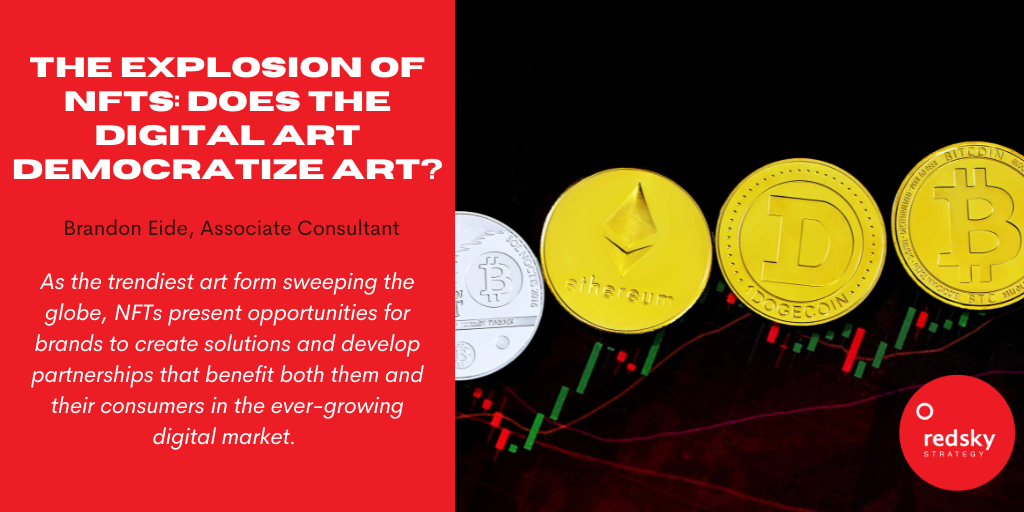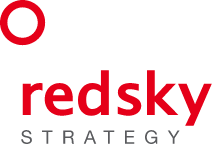News
The Explosion of NFTs: Does the Digital Art Democratize Art?

Image Credit: https://unsplash.com/photos/EM3BTKStjiA
With Art Basel coming up, now is the time to discuss the trendiest art form sweeping the globe: NFTs. What was once a $4.6 million market in 2019 is now, as of the end of 2021, a $11.1 billion sector of the art market.
NFTs — which stands for “non-fungible token” — allow buyers to purchase exclusive ownership of a digital good (usually an image, animation, or video) in the form of a unique digital token living on a blockchain.
Artwork typically comes with a license that allows the buyer to display them for personal use on a social media page, another digital marketplace, in a game world, or in a virtual museum. It can technically contain anything digital, including drawings, animated GIFs, songs, or items in video games.
Buyers of these works get the privilege of “owning” a piece of digital art — to the extent that one can really own an endlessly reproducible image file (some are easier to re-create than others). An NFT has a blockchain that keeps track of who has ownership of the file. The artists generally maintain all intellectual and creative rights to the works.
In other words, the owner has “bragging rights.” They can also directly support their favorite artists because the artist maintains creative rights to their works. You can copy the artwork someone else paid for, but it’s like having a copy print of an original work. It’s just not quite the same.
There is a wide range of NFT examples, some more surprising than others. For instance, former CEO Twitter Jack Dorsey sold his first-ever tweet as an NFT for over $2.9 million:
just setting up my twttr
— jack (@jack) March 21, 2006
NFTs are also big in the sports world. A digital statue of Lebron James sold for $21.6 million. Even a meme created in 2011 of a flying space cat with a Pop Tart for a body sold for $590,000.
While it may seem bizarre to some, it’s undeniable that there are people willing to pay big bucks for these digital works of art. As the spike in digital art continues, we’re curious about how this could impact how brands create solutions, develop partnerships, or shy away from such a new, complex, and oftentimes perplexing digital market.
NFTs Democratizing Digital Art
There have been many opportunities for companies and individuals to capitalize on the rise of NFTs. For example, Masterworks.io is an investing platform that you can put money into and have “shares” of famous art pieces. Some boast as much as 15 to 30% of annualized returns:
Masterworks.io helps answer a myriad of questions for people, including where in the art market are returns most predictable and what segments are most investable.
An example of product innovation is Samsung Frame. It lets you watch TV when it’s on and show art when it’s turned off. You can subscribe to art through the frame, too.
So how does this digital art market democratize art? It’s really about the decentralization of art. It used to be for galleries and the ultra rich. But now, because of NFTs and the blockchain, art is not only democratized but also decentralized as there is no real governing body playing in the marketplace.
Take, for example, women-focused NFT residencies which focus on decreasing the gender pay gap in blockchain tech by creating an NFT that will collect a body of work and make an NFT collection from it. It even boasts how it will work to interact with work that advances things like justice and equity, clean planet, well-being, etc. The potential downside of this is that there could be more room for copycats and phony NFTs being sold.
The Ugly Side of NFTs
There are also other big concerns that brands need to consider. One is the environmental impact of NFTs. NFT transactions are commonly purchased on platforms using Ethereum, a cryptocurrency blockchain.
Ethereum requires a “proof of work” step to be taken in order to verify the transaction’s validity. Unfortunately, this process is incredibly energy intensive. To put it into perspective, consider that one Ethereum transaction is projected to power an average U.S. household for nine days.
Right now, NFTs make up a small portion of the energy usage in Ethereum. But the energy consumption dichotomy is similar to an airline example.
If you purchase a ticket to fly, we can calculate the impact you made on carbon emissions from flying on the plane. But if you do not book the ticket, the plane will take off anyway and create the same carbon emissions with or without you.
Similarly, the more people interested in NFTs, the more demand for larger, more energy intensive servers will be required, which leads to more greenhouse gas emissions and energy consumption.
There are also fraud concerns to consider. For example, OpenSea, one of the most well-known crypto start-ups, recently faced backlash due to stolen and fraudulent tokens.
While some have anticipated NFTs democratizing access to the art market due to the assumed elimination or bypassing of intermediaries, a Nature Scientific Reports study reveals that it is actually shaping up to be similar to the traditional market. Cryptocurrency is a complex, nuanced topic, particularly for the average person, and we’re already seeing a handful of small trader groups and tastemakers emerging in the space.
How Brands Can Capitalize on NFTs
In addition to the environmental impacts, there are a handful of considerations brands need to account for when entering the world of NFTs.
First, who is the primary demographic for this NFT, digitized market? Many of COVIDs young millionaires and billionaires already invested in crypto are the first adopters of the big ticket NFTs. And while Millennials are the biggest fans of crypto, are their bets on crypto taking them to early retirement going to be sufficient?
There’s also the consideration of who to partner with to take a side on NFTs. This could be a:
- Company that focuses on sponsoring the artist community
- Company looking to make the blockchain more sustainable
- NFT influencer that resonates with your company brand/culture
It’s also important to consider how “value” is changing and how it’s perceived in the eyes of the consumer. More specifically, is price and potential future upside important to consumers in this market? Or is the unique collection of such items what drives consumers, no matter the cost?
To make a new kind of innovation feel less overwhelming, it’s critical for brands to approach NFTs through the eyes of HumanSight™. At RedSky Strategy, our ambition is not only to help raise Return On Investment (ROI), but to help brands understand their customer at the human level. What aspirations do these people have? What motivates them to be special in their respective categories? We aim to help solve questions like: How can we help you find a way to better know your consumer and give the consumer tools to better know you, all while staying culturally relevant?
These are the kinds of questions that RedSky Strategy can help you solve through our rigorous, actionable, and meaningful research methodology. Through segmentation, we can help you better understand an NFT platform and the attitudes and behaviors of your consumers. Through Brand Strategy, we can conduct concept and message testing to learn about the potential outcomes of your brand partnering with an NFT or digital art.
Interested in working with RedSky Strategy? We look forward to helping you leverage HumanSight to develop a brand strategy that helps you capitalize on the flourishing world of NFTs and digital art.
